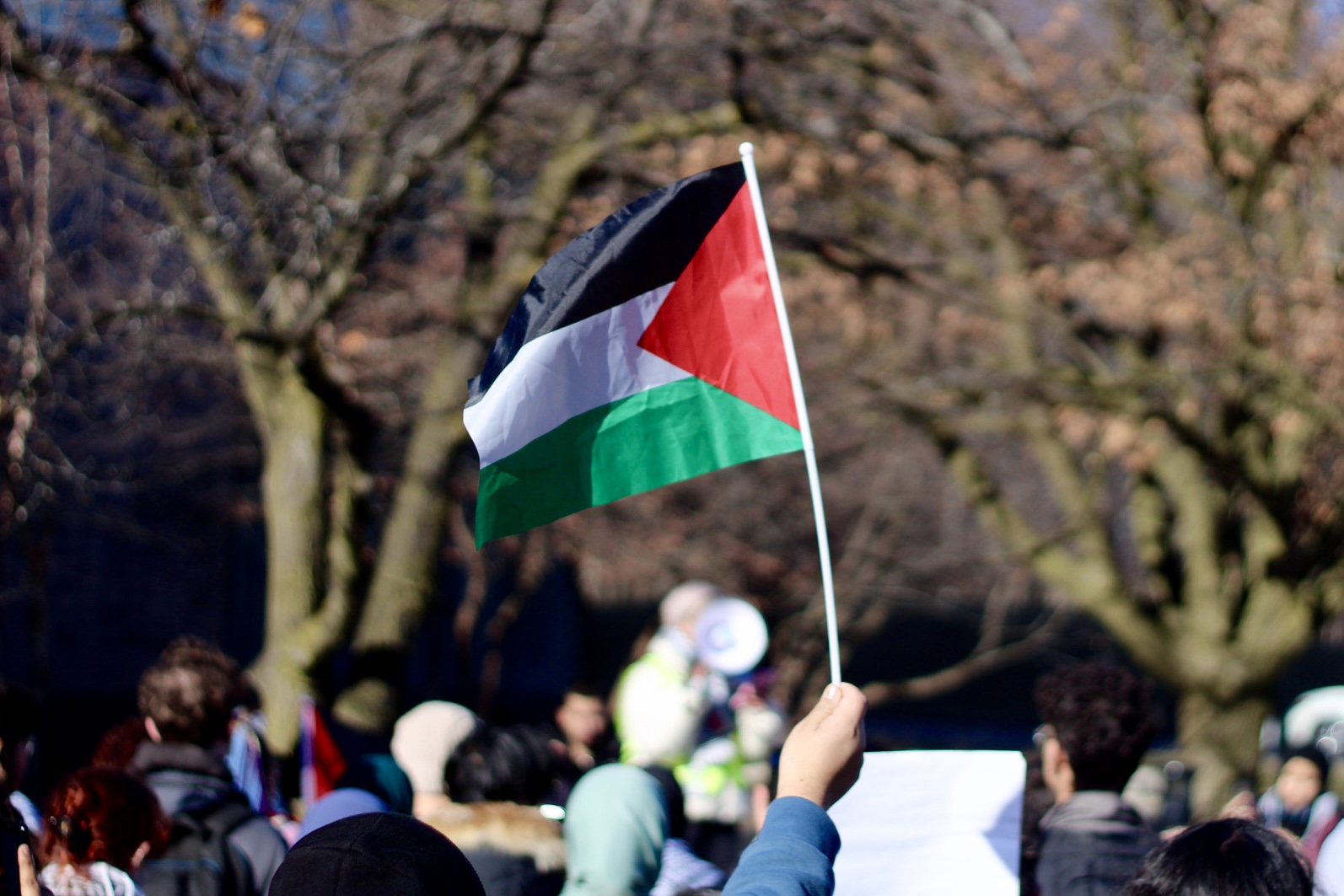Nothing stands sacred in a cultural genocide
Gaza is having its people and its culture eradicated.
My name is Aya Yafaoui. In Arabic, my last name translates to “Aya of Yafa.” You might not know where Yafa is until I tell you the other name the city is called: Tel Aviv. Many will know the colonizer’s name for my city rather than the name it was given by its Indigenous people. Just like how most know Jerusalem but not Al-Quds, Hebron but not Al-Khalil, Netanya but not Umm Khalid, Jericho but not Ariha. The erasure of Palestinian names for the land is why Palestinians name their children after those occupied cities and towns. Names such as Bisan, Safad, and Karmel, all keep our history alive as it is actively being wiped out and rewritten by the colonial project known as Israel.
This practice is not new. In Canada, our cities and towns are titled by the British and French colonizers who landed here centuries ago. Our very country’s name is a word taken from the Indigenous people residing here and anglicized. Only a few years ago did Toronto recognize the Indigenous Anishinaabe names for two major roads, due to the efforts of the “Ogimaa Mikana” project started at the height of the Idle No More movement in 2013. Those streets are Spadina Road, now Ishpadinaa, and Davenport Road, now Gete-Onigaming. Even the City of Toronto has an original Anishinaabe name: Gichi Kiiwenging. Here at the University of Toronto, Mississauga, we are always reminded that we live and work on stolen land, but we do not offer more than an acknowledgment of that fact. Institutions and cultural centres do not do enough to sustain the knowledge, culture, names, and connections that the Indigenous tribes have to this land we occupy.
It is a fact that Canada committed a genocide, both by murdering people and by destroying cultural knowledge. An acknowledgement that is hard won by Indigenous peoples all across Turtle Island. In the year 2024, Israel now commits a genocide, in every sense, against Palestinian people. Yet, this eradication is not only of a people, but of the very history—the very memory of Palestine.
At least 195 heritage sites have been destroyed in Gaza. And that number only reflects the ones that are known to have been damaged. There are still many places that have not been assessed due to the genocide and ethnic cleansing raging around them. These sites do not just hold the history of modern Palestine. Gaza has always been a central place for numerous civilizations and ancient empires. The ancient Egyptians, Romans, Assyrians, and Ottomans all left their mark on Gaza, leaving behind important relics and sites. The Greek, Persian, Nabataean, and Jewish civilizations have also lived and traded on the coast that Gaza sits on. It is a war crime to target these historic cultural and religious sites. It also breaks the 1954 Hague Convention that both Palestine and Israel signed that protects such landmarks from being targeted in war.
The Byzantine Church of Jabalia was built in 444 CE during the rule of Emperor Theodosius II. Its walls were inscribed with 16 religious texts written in ancient Greek, and it held colourful mosaics of animals, palm trees, and hunting scenes. It is now destroyed because of Israeli airstrikes. The Monastery of Saint Hilarion was built during Roman rule of the region, and it dates back to 340 CE. It is now damaged due to Israeli airstrikes. The oldest church in Gaza, The Greek Orthodox Church of Saint Porphyrius, which has stood in Gaza since 425 CE—for 16 centuries—and is the third oldest church in the world, was also bombed by Israeli airstrikes. The history and religious centres of Palestinian Christians are being eradicated.
More than 100 mosques in Gaza have been destroyed or damaged. The first mosque built in Gaza more than 1,400 years ago, The Great Omari Mosque, or Al-Masjid al-Omari al-Kabir, has been destroyed by an Israeli airstrike. The mosque held a library that contained some of the rarest books and manuscripts in the world, without a single copy elsewhere. The collection featured a “14th century Book of Sufi Poems of Ibn-Zokaa and books by famed Gazan jurists, including Sheikh Skaike.” The library also held “old copies of the Quran, biographies of the Prophet Muhammad and ancient books on philosophy, medicine and Sufi mysticism.” All these physical artifacts have been destroyed, with only the digital versions having been preserved thanks to a digitization project that was completed just last year.
Of course, it is not only religious sites that have been destroyed. Museums such as the Rafah Museum or the Al Qarara Museum have also been targeted. Various public service buildings have been hit, including the site that held peace talks between the Palestinian Liberation Organization leader Yasser Arafat and US President Bill Clinton in the 1990s, the Rashad El Shawa Cultural Center. More than 40 media offices have been destroyed. Nearly 350 schools have been damaged or destroyed. And all 36 hospitals in Gaza have been attacked or completely destroyed, rendering only nine hospitals open, with severely limited services as the healthcare system has collapsed. These buildings hold knowledge and culture that has now been left under the rubble, along with the bodies of thousands of Palestinians.
But we are a university student body, and so I will highlight to you that every university in Gaza has been destroyed by Israel. Ninety-four university professors have been assassinated by the Israeli army. I would like you to look at your department and imagine all of them dead. Then move on to the next department, and the next, until you reach 94 people who have been murdered for the sole reason of being academics. These universities were not decimated only due to airstrikes, however. On January 17, the Israeli army detonated 315 mines to demolish Israa University, the last-standing university in Gaza. The key word in that sentence being “mines.” For you cannot mine bomb a space that is in active conflict. The university had to have been abandoned for the soldiers to dig and plant three-hundred-and-fifteen bombs on the premises. There was no Hamas. No threat. It was an empty building. One that symbolized Palestinian knowledge and culture. And the colonizer eagerly pressed a button and cast it into oblivion.
The truth of the matter is that these actions do not stay within the limits of the Gaza Strip. The colonial powers of our world are showing you an important lesson right now: nothing is sacred to the colonizer. It did not matter to them centuries ago, and it does not matter now, no matter what the international law states and the signatures of those countries. They will target your hospitals. They will target your homes. They will target your schools. In fact, they already have. Do you not see the violence of our system when school shootings, healthcare system strain, and the cost-of-living crisis are the norm?
My fellow students, you must speak out. If not to protect Palestinians, then to protect yourselves. You may not be students forever, but you will face the violence of our colonial world, eventually. Do what you can right now. Both because it is your duty as a student at a university institution, and because humanity calls on you to stand steadfast against colonialism.



Jerusalem was named Al-Quds by Arab Muslim Imperial colonialists. Wonder why THAT wasn’t mentioned?
Also not mentioned, as if the Israelis went into Gaza without any provocation, was the 7th October massacre perpetrated by Gazans. How did this remarkably overtly one-sided piece get by the Editorial board?